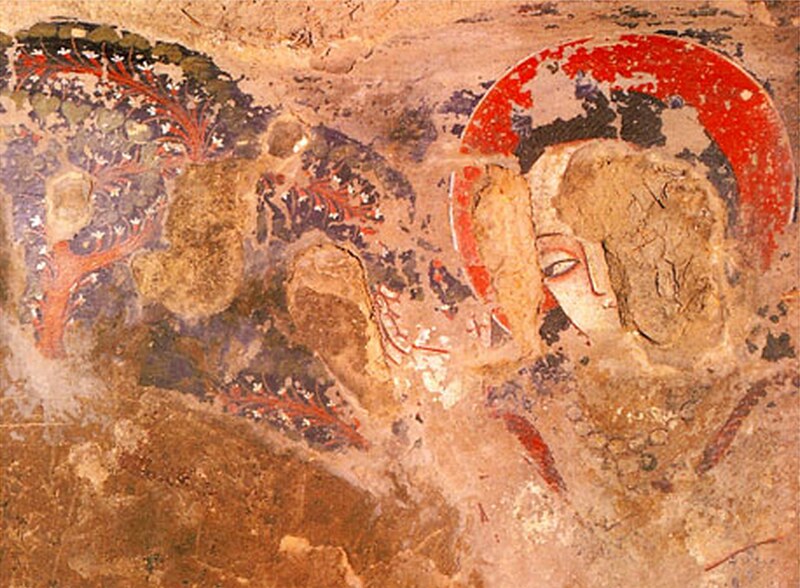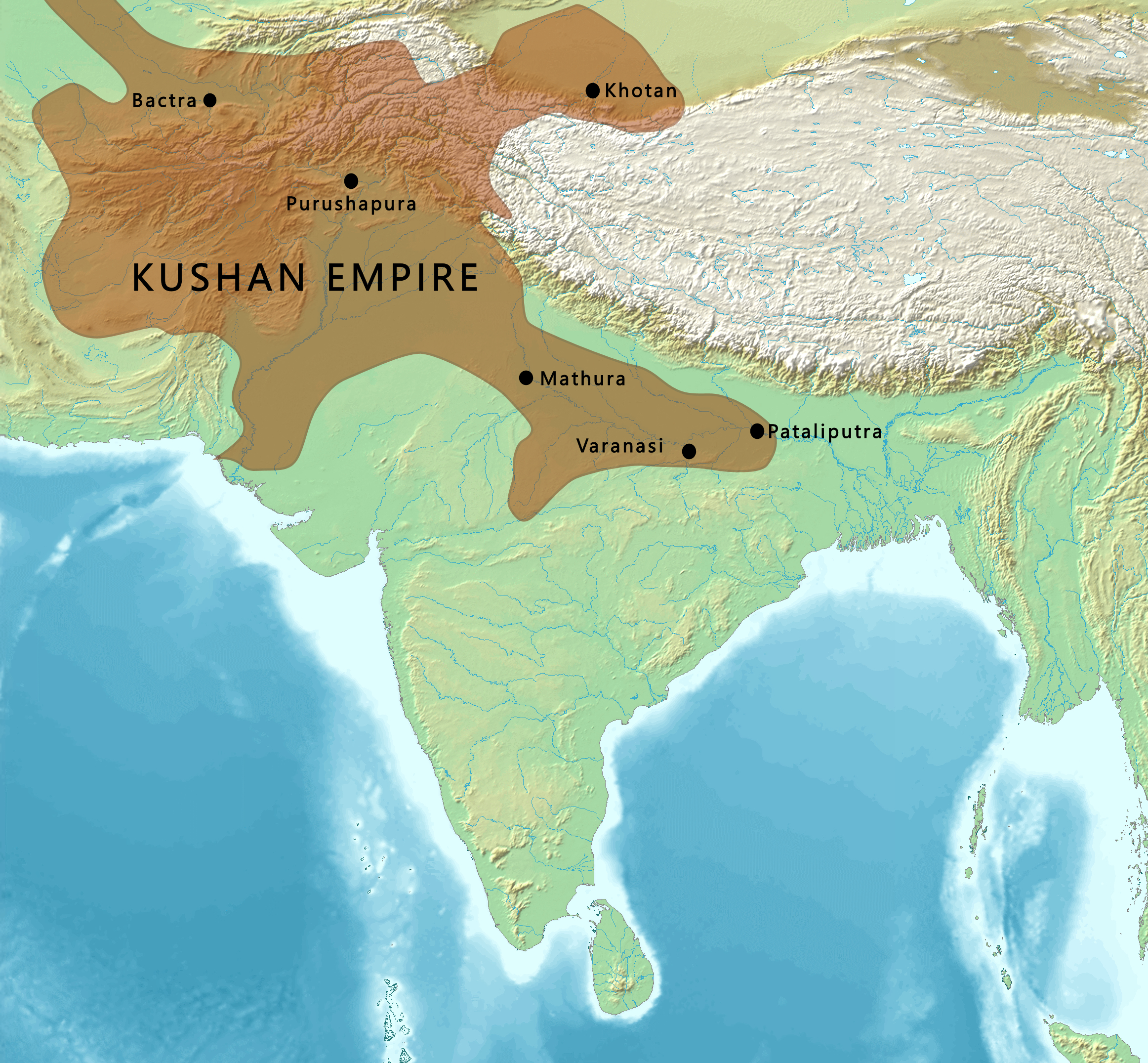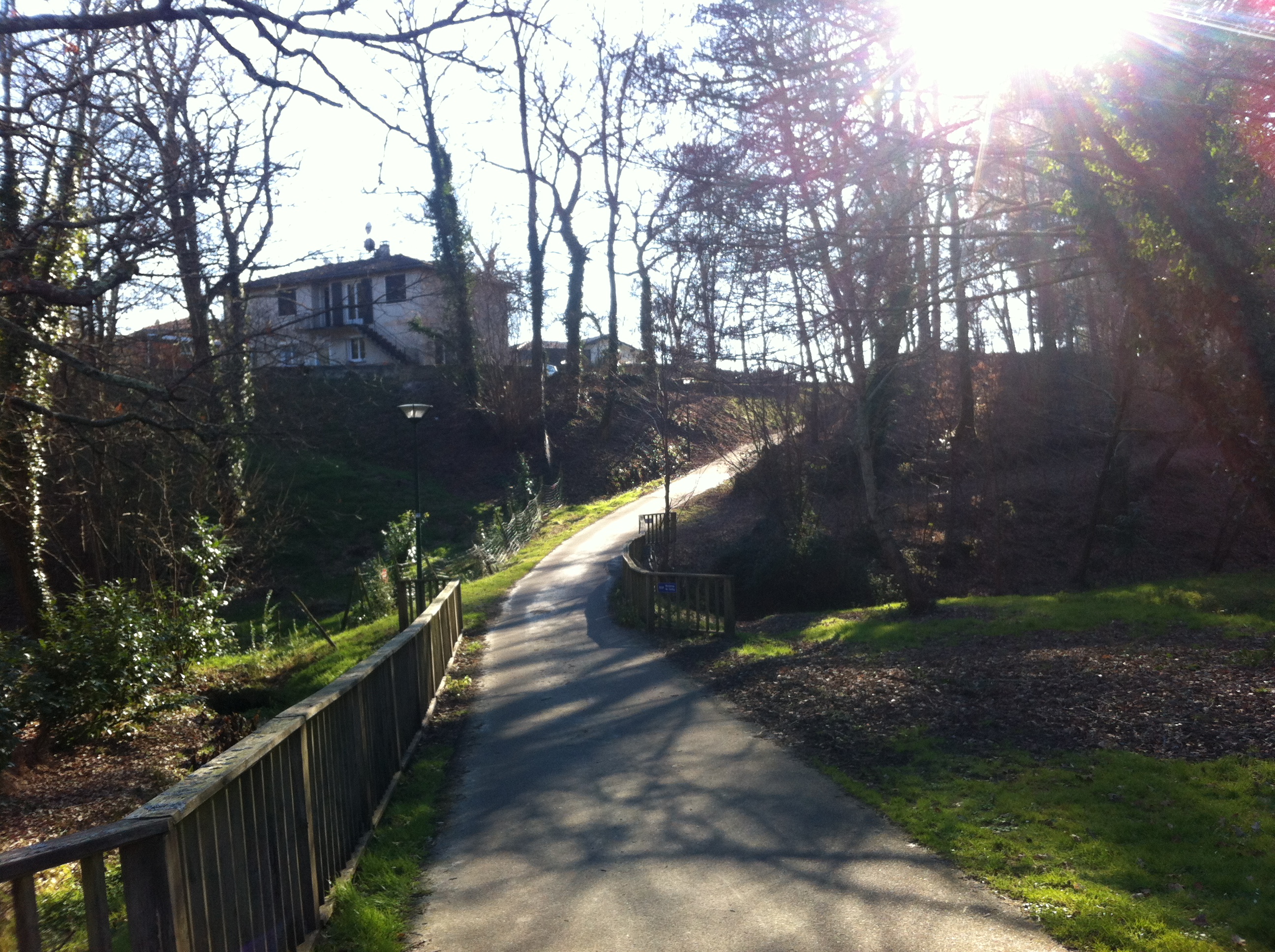|
Archaeology Of Afghanistan
Located on the strategic crossroads of Iran, India, China and Central Asia, Afghanistan boasts a diverse cultural and religious history. The soil is rich with archaeological treasures and art that have for decades come under threat of destruction and damage. Archaeology of Afghanistan, mainly conducted by British and French antiquarians, has had a heavy focus on the treasure filled Buddhist monasteries that lined the silk road from the 1st c. BCE – 6th c. AD. Particularly the ancient civilizations in the region during the Hellenistic period and the Kushan Empire. The world's oldest-known oil paintings, dating to the 7th c. AD, were found in caves in Afghanistan's Bamiyan Valley. The valley is also home to the famous Buddhas of Bamiyan. Many of these valuable artefacts are either stored in the National Museum of Afghanistan or continue to be uncovered in the field. Unfortunately they face serious threat of destruction and damage as a result of illegal trade, looting and the Ta ... [...More Info...] [...Related Items...] OR: [Wikipedia] [Google] [Baidu] |
Iran
Iran, officially the Islamic Republic of Iran (IRI) and also known as Persia, is a country in West Asia. It borders Iraq to the west, Turkey, Azerbaijan, and Armenia to the northwest, the Caspian Sea to the north, Turkmenistan to the northeast, Afghanistan to the east, Pakistan to the southeast, and the Gulf of Oman and the Persian Gulf to the south. With a Ethnicities in Iran, multi-ethnic population of over 92 million in an area of , Iran ranks 17th globally in both List of countries and dependencies by area, geographic size and List of countries and dependencies by population, population. It is the List of Asian countries by area, sixth-largest country entirely in Asia and one of the world's List of mountains in Iran, most mountainous countries. Officially an Islamic republic, Iran is divided into Regions of Iran, five regions with Provinces of Iran, 31 provinces. Tehran is the nation's Capital city, capital, List of cities in Iran by province, largest city and financial ... [...More Info...] [...Related Items...] OR: [Wikipedia] [Google] [Baidu] |
Kabul
Kabul is the capital and largest city of Afghanistan. Located in the eastern half of the country, it is also a municipality, forming part of the Kabul Province. The city is divided for administration into #Districts, 22 municipal districts. A 2025 estimate puts the city's population at 7.175 million. In contemporary times, Kabul has served as Afghanistan's political, cultural and economical center. Rapid urbanisation has made it the country's primate city and one of the largest cities in the world. The modern-day city of Kabul is located high in a narrow valley in the Hindu Kush mountain range, and is bounded by the Kabul River. At an elevation of , it is one of the List of capital cities by elevation, highest capital cities in the world. The center of the city contains its old neighborhoods, including the areas of Khashti Bridge, Khabgah, Kahforoshi, Saraji, Chandavel, Shorbazar, Deh-Afghanan and Ghaderdiwane. Kabul is said to be over 3,500 years old, and was mentioned at the ... [...More Info...] [...Related Items...] OR: [Wikipedia] [Google] [Baidu] |
Mullah Omar
Muhammad Umar Mujahid (196023 April 2013), commonly known as Mullah Omar or Muhammad Omar, was an Afghan militant leader and founder and the first leader of the Taliban from 1994 until his death in 2013. During the Third Afghan Civil War, the Taliban fought the Northern Alliance and took control of most of the country, establishing its First Islamic Emirate for which Omar disputedly began to serve as Supreme Leader in 1996. Shortly after al-Qaeda carried out the September 11 attacks, the Taliban government was toppled by an American invasion of Afghanistan, prompting Omar to go into hiding; he successfully evaded capture by the American-led coalition before dying in 2013 from tuberculosis. Born into a religious family in Kandahar, Omar was educated at local madrasas in Afghanistan. After Afghanistan was invaded by the Soviet Union in 1979, he joined the Afghan mujahideen to fight in the Soviet–Afghan War and he was trained by Amir Sultan Tarar. He served as an important reb ... [...More Info...] [...Related Items...] OR: [Wikipedia] [Google] [Baidu] |
Taller Buddha Of Bamiyan Before And After Destruction
Taller is a commune in the Landes department in Nouvelle-Aquitaine in southwestern France. William II Sánchez of Gascony perpetrated a major defeat of the Vikings at Taller in 982 and they vanished as a serious threat thereafter. Population Etymology The origins of the name "Taller" are still uncertain but might come from the English word "tall", which could be related to the altitude of the village from which went from 70 to 90m in 982. Taller used to be called Talleyras. History Legends say that in 982 Guillaume Sanche duc d'Aquitaine ( Gascogne) fought and won against the Normans (Vikings). During World War II, Taller used to be a German ammunition depot. Geography Taller is located in France, in Nouvelle-Aquitaine in the Landes department, near Dax Pilgrims walk through the village because it is part of the " Chemin de Compostelle" (Compostelle Way). Education There is a primary school in Taller; however children over 7 years old have to attend anoth ... [...More Info...] [...Related Items...] OR: [Wikipedia] [Google] [Baidu] |
Hadda, Afghanistan
Haḍḍa () is a Greco-Buddhist archeological site located ten kilometers south of the city of Jalalabad, in the Nangarhar Province of eastern Afghanistan. Hadda is said to have been almost entirely destroyed in the fighting during the civil war in Afghanistan. Background Some 23,000 Greco-Buddhist sculptures, both clay and plaster, were excavated in Hadda during the 1930s and the 1970s. The findings combine elements of Buddhism and Hellenistic civilization, Hellenism in an almost perfect Hellenistic style. Although the style of the artifacts is typical of the late Hellenistic 2nd or 1st century BCE, the Hadda sculptures are usually dated (although with some uncertainty), to the 1st century CE or later (i.e. one or two centuries afterward). This discrepancy might be explained by a preservation of late Hellenistic styles for a few centuries in this part of the world. However it is possible that the artifacts actually were produced in the late Hellenistic period. Given the antiq ... [...More Info...] [...Related Items...] OR: [Wikipedia] [Google] [Baidu] |
Soviet–Afghan War
The Soviet–Afghan War took place in the Democratic Republic of Afghanistan from December 1979 to February 1989. Marking the beginning of the 46-year-long Afghan conflict, it saw the Soviet Union and the Armed Forces of the Democratic Republic of Afghanistan, Afghan military fight against the rebelling Afghan mujahideen, aided by Pakistan. While they were backed by various countries and organizations, the majority of the mujahideen's support came from Pakistan, the United States (as part of Operation Cyclone), the United Kingdom, China, Iran, and the Arab states of the Persian Gulf, in addition to a large influx of foreign fighters known as the Afghan Arabs. American and British involvement on the side of the mujahideen escalated the Cold War, ending a short period of relaxed Soviet Union–United States relations. Combat took place throughout the 1980s, mostly in the Afghan countryside, as most of the country's cities remained under Soviet control. The conflict resulted in the de ... [...More Info...] [...Related Items...] OR: [Wikipedia] [Google] [Baidu] |
Soviet Union
The Union of Soviet Socialist Republics. (USSR), commonly known as the Soviet Union, was a List of former transcontinental countries#Since 1700, transcontinental country that spanned much of Eurasia from 1922 until Dissolution of the Soviet Union, it dissolved in 1991. During its existence, it was the list of countries and dependencies by area, largest country by area, extending across Time in Russia, eleven time zones and sharing Geography of the Soviet Union#Borders and neighbors, borders with twelve countries, and the List of countries and dependencies by population, third-most populous country. An overall successor to the Russian Empire, it was nominally organized as a federal union of Republics of the Soviet Union, national republics, the largest and most populous of which was the Russian SFSR. In practice, Government of the Soviet Union, its government and Economy of the Soviet Union, economy were Soviet-type economic planning, highly centralized. As a one-party state go ... [...More Info...] [...Related Items...] OR: [Wikipedia] [Google] [Baidu] |
Begram Ivories
The Begram ivories are a group of over a thousand decorative plaques, small figures and inlays, carved from ivory and bone, and formerly attached to wooden furniture, that were excavated in the 1930s in Bagram (Begram), Afghanistan. They are rare and important exemplars of Kushan art of the 1st or 2nd centuries CE, attesting to the cosmopolitan tastes and patronage of local dynasts, the sophistication of contemporary craftsmanship, and to the ancient trade in luxury goods. They are the best known element of the Begram Hoard. The '' French Archaeological Delegation in Afghanistan'' (DAFA) conducted excavations at the site between 1936 and 1940, uncovering two walled-up strongrooms, Room 10 and Room 13. Inside, a large number of bronze, alabaster, glass (remains of 180 pieces), coins, and ivory objects, along with remains of furniture and Chinese lacquer bowls, were unearthed. Some of the furniture was arranged along walls, other pieces stacked or facing each other. In particula ... [...More Info...] [...Related Items...] OR: [Wikipedia] [Google] [Baidu] |
Buddhas Of Bamiyan
The Buddhas of Bamiyan (, ) were two monumental Buddhist statues in the Bamiyan Valley of Afghanistan, built possibly around the 6th-century. Located to the northwest of Kabul, at an elevation of , carbon dating of the structural components of the Buddhas has determined that the smaller "Eastern Buddha" was built around 570 CE, and the larger "Western Buddha" was built around 618 CE, which would date both to the time when the Hephthalites ruled the region.Eastern Buddha: 549–579 CE (1 σ range, 68.2% probability) 544–595 CE (2 σ range, 95.4% probability). Western Buddha: 605–633 CE (1 σ range, 68.2%) 591–644 CE (2 σ range, 95.4% probability). In Blänsdorf et al. (2009). As a UNESCO World Heritage Site of historical Afghan Buddhism, it was a holy site for Buddhists on the Silk Road. However, in March 2001, both statues were destroyed by the Taliban following an order given on February 26, 2001, by Taliban leader Mullah Muhammad Omar, to destroy all the statues i ... [...More Info...] [...Related Items...] OR: [Wikipedia] [Google] [Baidu] |
Stupa
In Buddhism, a stupa (, ) is a domed hemispherical structure containing several types of sacred relics, including images, statues, metals, and '' śarīra''—the remains of Buddhist monks or nuns. It is used as a place of pilgrimage and meditation. Walking around a stupa in a clockwise direction, known as '' pradakhshina'', has been an important ritual and devotional practice in Buddhism since the earliest times, and stupas always have a ''pradakhshina'' path around them. The original South Asian form is a large solid dome above a tholobate, or drum, with vertical sides, which usually sits on a square base. There is no access to the inside of the structure. In large stupas, there may be walkways for circumambulation on top of the base as well as on the ground below it. Large stupas have, or had, ''vedikā'' railings outside the path around the base, often highly decorated with sculpture, especially at the torana gateways, of which there are usually four. At the top of ... [...More Info...] [...Related Items...] OR: [Wikipedia] [Google] [Baidu] |
Guimet Museum
The Guimet Museum (full name in ; ''MNAAG''; ) is a Parisian art museum with one of the largest collections of Asian art outside of Asia that includes items from Cambodia, Thailand, Viet Nam, Tibet, India, and Nepal, among other countries. Founded in the late 19th century, it is located in the XVIe arrondissement, 16th arrondissement of Paris, France, at 6, place d'Iéna. Its name literally translated into English is the ''National Museum of Asian Arts-Guimet'', or ''Guimet National Museum of Asian Arts''. History Founded by Émile Étienne Guimet, an industrialist, the museum first opened at Lyon in 1879 but was later transferred to Paris, opening in the place d'Iéna in 1889. Devoted to travel, Guimet was in 1876 commissioned by the minister of public instruction to study the religions of the Far East, and the museum contains many of the fruits of this expedition, including a fine collection of Chinese and Japanese porcelain and objects relating not merely to the religions o ... [...More Info...] [...Related Items...] OR: [Wikipedia] [Google] [Baidu] |
Trésor De Begram Ganymède
Trésor or Tresor may refer to People Given name or nickname * Tresor (musician) (born 1987), Congolese singer * Trésor Kandol (born 1981) Congolese footballer * Tresor Kangambu (born 1987), Qatari footballer * Trésor Luntala (born 1982), Congolese footballer * Tresor Mbuyu (born 1996), Congolese footballer * Trésor Mossi (born 2001), Burundian footballer * Trésor Mputu (born 1985), Congolese footballer * Trésor Ndikumana (born 1998), Burundian footballer * Tresor Samba (born 2002), Swiss footballer Surname * Marius Trésor (born 1950), French footballer * Mike Trésor (born 1999), Belgian footballer Other uses * TRESOR, an encryption system for Linux computers * Trésor (album), ''Trésor'' (album), a 2010 album by Kenza Farah * Tresor (album), ''Tresor'' (album), a 2022 album by Gwenno * Tresor (club), a German nightclub and record label * Trésor public, the national administration of the Treasury in France * ''Le Trésor'', a 1980 novel by Juliette Benzoni See als ... [...More Info...] [...Related Items...] OR: [Wikipedia] [Google] [Baidu] |







